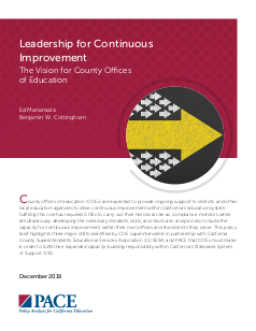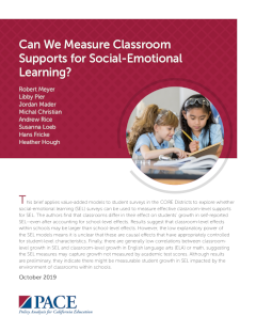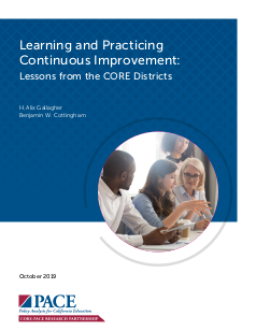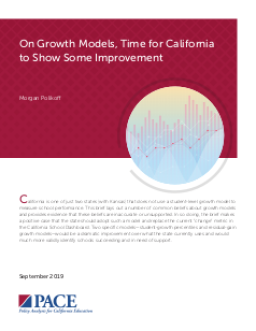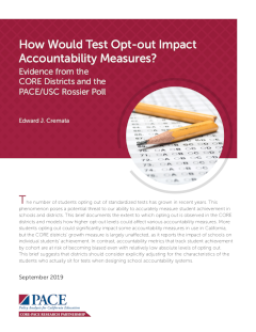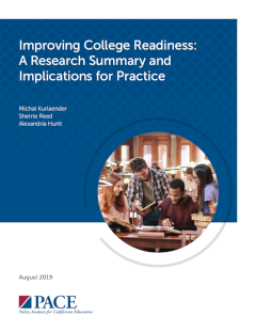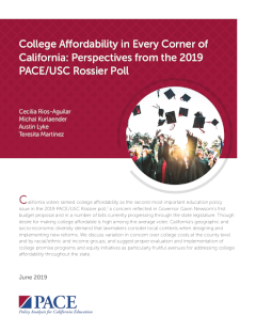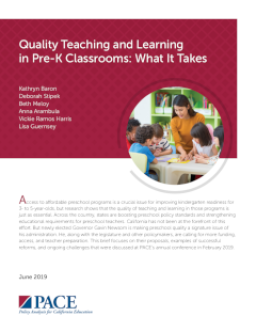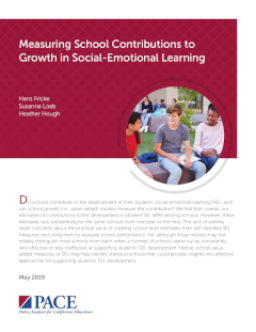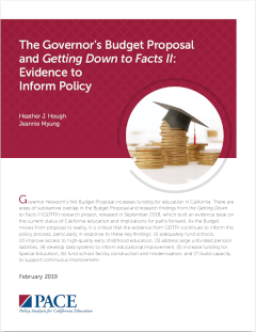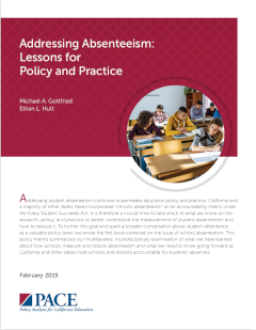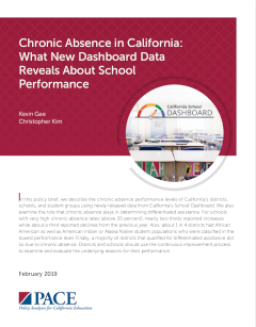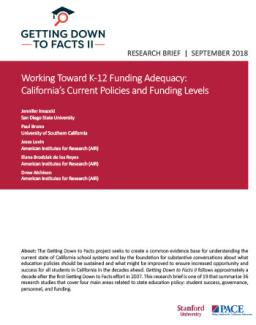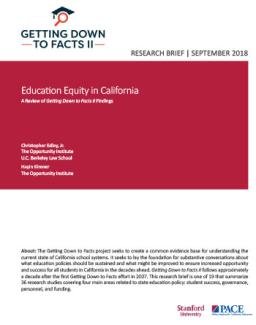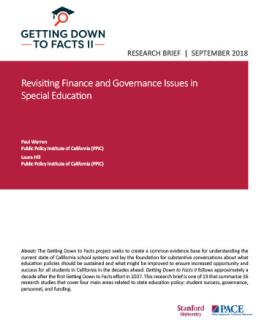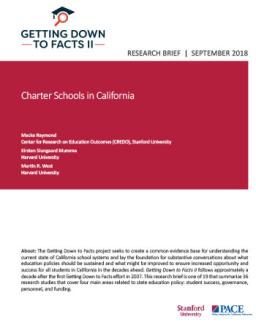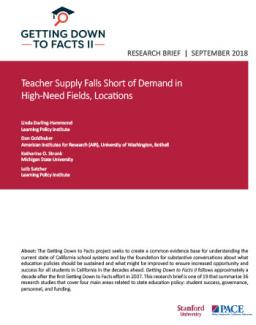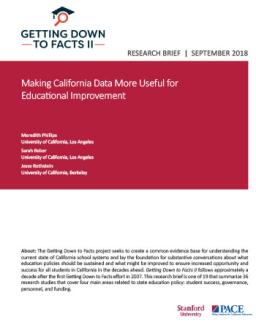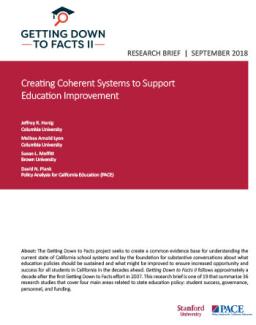Summary
Summary
Summary
Summary
Summary
Summary
Summary
The increase in students opting out of standardized tests is a threat to accurately measuring student achievement. This brief examines the effects of opting out in the CORE districts and models how it could affect accountability measures. More opt-outs could significantly impact some metrics, but the growth measure is largely unaffected. Metrics tracking achievement by cohort are at risk of bias, even with low levels of opting out. Adjusting for characteristics of students who take the tests could be a solution.
Summary
Summary
Governor Newsom has proposed initiatives to support children under 5, but California voters prioritize K-12 education and college affordability over early education. Despite evidence that high-quality early education has a powerful impact on children’s future success, more active engagement by the Governor and his allies may be necessary to build public support for expanding access and improving the quality of early education programs.
Summary
College affordability was ranked as the second most important education policy issue in the 2019 PACE/USC Rossier poll. Governor Newsom’s budget proposal and several bills in the state legislature reflect this concern. The diverse geography and socioeconomic status in CA demand local context consideration for designing effective reforms. Variation in concern over college costs is discussed by county and income and racial/ethnic groups. Proper evaluation and implementation of college promise programs and equity initiatives are suggested as fruitful avenues for addressing college affordability.
Summary
Summary
Summary
This report examines the stability of school effects on social-emotional learning (SEL) over two years in California's CORE districts. The correlations among school effects in the same grades across different years are positive but lower than those for math and ELA. While these effects measure real contributions to SEL, their low stability draws into question whether including them in school performance frameworks and systems would be beneficial.
Summary
This report updates previous research on California's Local Control Funding Formula (LCFF) using a 2019 poll of California voters. Despite increased awareness, over half of voters are unfamiliar with LCFF. Support for the policy remains high but has decreased. Participation in LCFF engagement has increased but remains low, particularly among low-income voters. Low-income communities may not be meaningfully engaged in LCFF decision-making.
Summary
This brief analyzes the 2018 update of the California School Dashboard, examining improvements and areas for continued enhancement. Using data from the 2019 PACE/USC Rossier poll, the author characterizes use of and support for the Dashboard, finding low use, equity gaps, but high support and preference for the new Dashboard.
Summary
Governor Newsom’s first Budget Proposal increases funding for education in California. There are areas of substantive overlap in the Budget Proposal and research findings from the Getting Down to Facts II (GDTFII) research project, released in September 2018, which built an evidence base on the current status of California education and implications for paths forward. As the Budget moves from proposal to reality, it is critical that the evidence from GDTFII continues to inform the policy process.
Summary
Summary
Summary
California's education system aims to provide all public school students with a broad course of study consistent with state standards. However, many educators feel that the state's funding system does not provide adequate resources to meet these expectations. While funding levels have improved, they remain below those of many other states. An adequacy study estimated that providing an adequate education would have required California to spend $25.6B more in 2016-17. The study also found that larger gaps between actual spending and adequate costs were associated with lower student performance.
Summary
Getting Down to Facts II reveals California's limited progress in reducing achievement and opportunity gaps for Black, Latino, low-income, and/or English language learners. The state's education reforms have relied on good intentions rather than specific accountability and enforcement, resulting in below national average outcomes. This paper examines equity in teaching, learning, finance, and accountability and concludes with a broader conception of equity for the future, whole child equity, to tackle this nearly intractable problem.
Summary
California's Local Control Funding Formula highlights low performance of special education students. Many districts allocate more base funding for all students into special education. A study found state funding growth has not kept pace with district costs, and the current formula inadequately funds preschool programs for infants and toddlers with disabilities. The study suggests better alignment between special education and the LCFF, and improved governance and accountability structures.
Summary
Charter schools serve 620,000 students in California, but their impact on traditional public schools is unknown. Charter schools have significantly better academic growth in urban areas and lower-performing groups. California's charter school authorization is decentralized with limited accountability and oversight capacity. Renewal processes are unclear, and the standards for renewal are low.
Summary
California's teacher shortage is severe, affecting high-needs students and certain subjects such as math, science, special education, and bilingual education. Factors driving the shortage include new demands for teachers, declining enrollment in teacher preparation programs, and teacher attrition. Schools are hiring teachers lacking standard credentials and formal training. Unequal teacher distribution's impact is hard to assess due to data limitations. The shortage threatens California's education initiatives.
Summary
California's education leaders and policymakers have limited ability to make informed decisions due to weaknesses in the state's education data systems. Although California has improved its data systems, it still falls behind other states in data availability and usefulness. The California Longitudinal Pupil Assessment and Data System (CALPADS) is not integrated with other data systems, and access issues further limit utilization. With additional investment, California could develop a comprehensive statewide data system to better understand what is and isn't working in its education system.
Summary
California's implementation of Common Core State Standards and Local Control Funding Formula requires new support systems for districts, including professional networks and the California Department of Education. Successful implementation requires multiagency cooperation and strategic management of relations with Washington.
